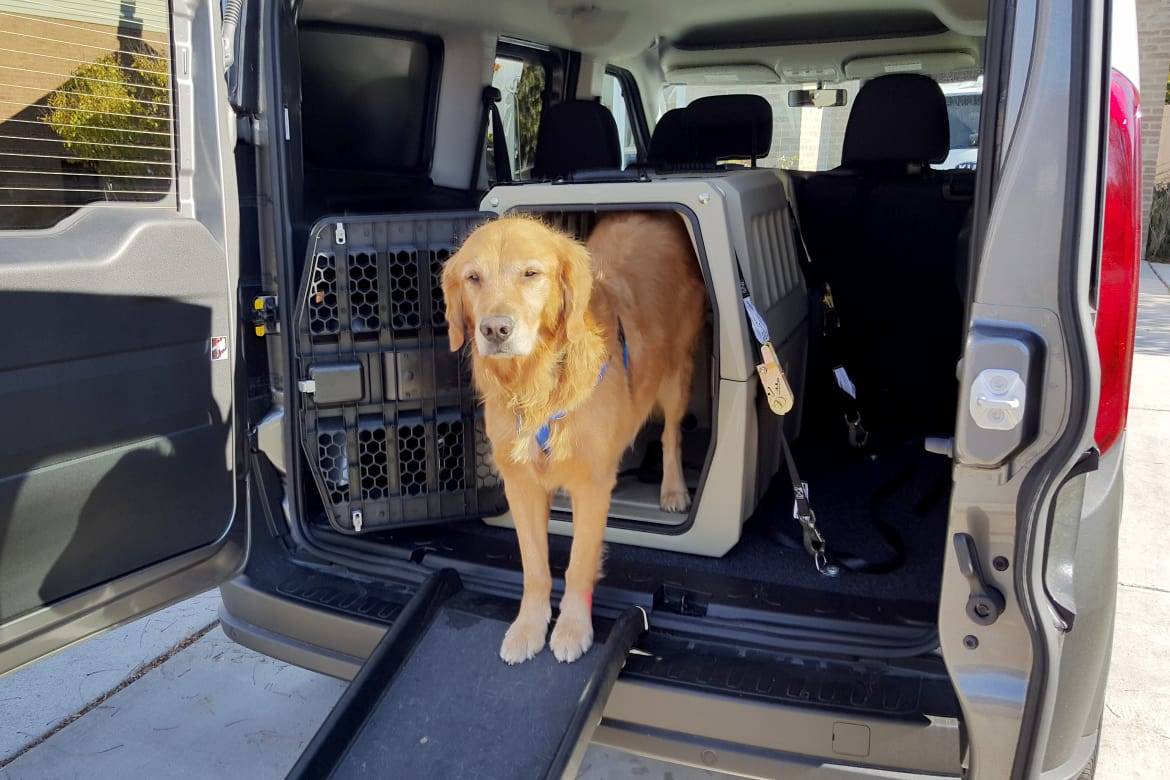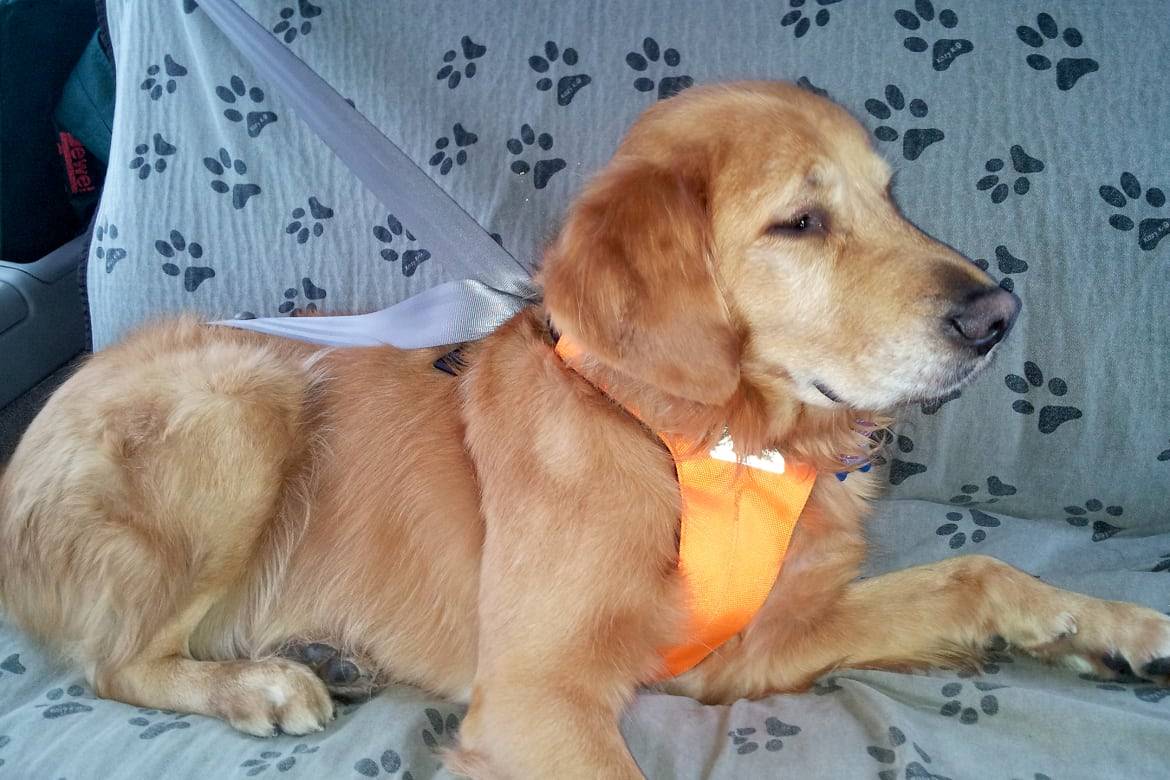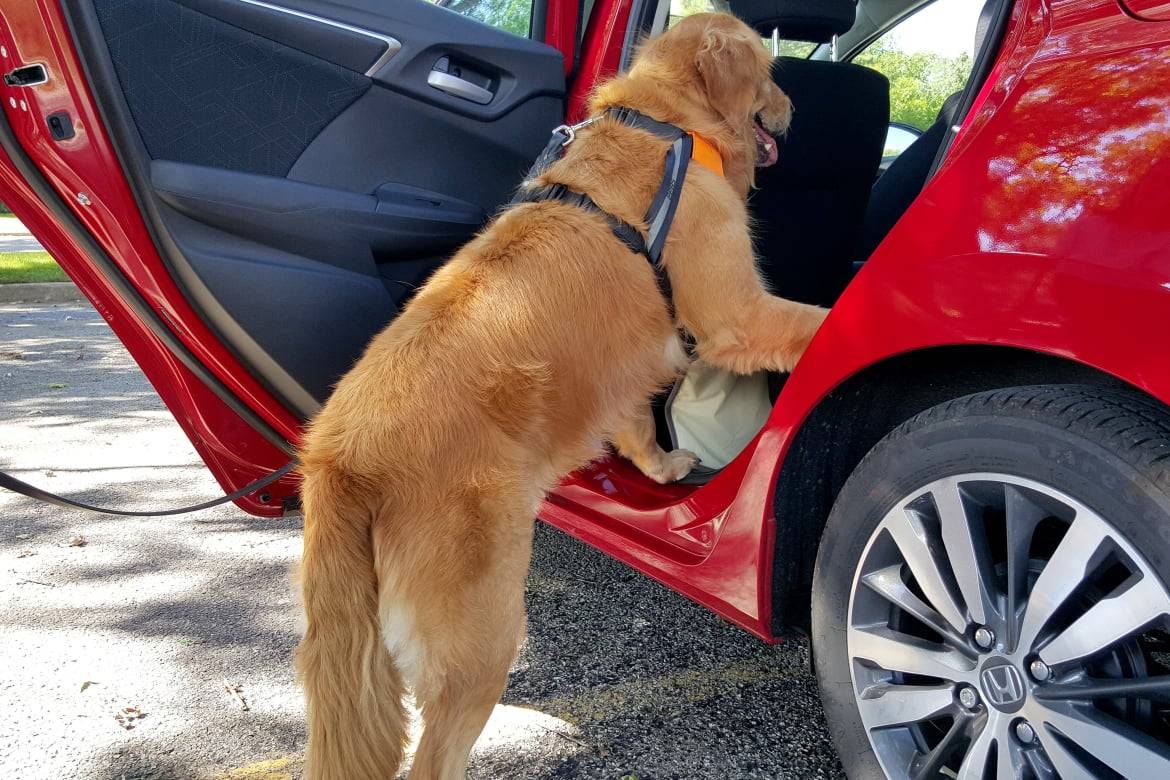How to Travel Safely With Your Dog

CARS.COM — What kind of life would it be if we couldn’t take our furry, four-legged friends with us on vacation? As someone with two dogs, I can tell you my pre-pup travels were not nearly as entertaining — and maybe didn’t involve quite as many pit stops. Trips with your dogs can be lots of fun, but it’s important to remember their safety when you’re on the road.
Related: How Well Do Dogs Fit in the Honda Fit?
With National Dog Day on Aug. 26, we’ve put together some tips for traveling with your pet, whether it’s a quick trip to the store for treats or a cross-country adventure.
Pet-Travel Best Practices
Keep Them Contained
While it’s illegal for adults to ride in a car without wearing a seat belt, New Hampshire excluded, there’s no such law for pets. Still, it’s critically important that your pups are contained or restrained when traveling by vehicle. Allowing them to roam around the car during a trip is not only dangerous, but it also heightens the likelihood of distracted driving. In a 2011 survey by AAA and Kurgo Pet Products, 65 percent of respondents had participated in at least one distracting behavior while driving with their dog. Distracted driving behaviors – including petting your dog, letting it sit on your lap while driving and feeding it treats – increase the likelihood of a crash. The Centers for Disease Control and Prevention reports that more than eight people are killed and 1,161 injured each day in crashes involving a distracted driver. You can pet and praise your dog when you aren’t driving; it’s better for the both of you.
There are multiple ways to protect your dog during a car ride, from seat belt harnesses to travel crates. It’s important to recognize the difference between distraction-prevention and crash-protection products. According to our copy editor and resident pet enthusiast Jen Burklow, most pet harnesses, crates and carriers serve to keep pets from becoming a distraction. “They do little to keep pets and humans safe during a crash,” Burklow said. “Sadly, many products are marketed with statements claiming the products have been crash-tested when they really haven’t been, so it’s a buyer-beware situation.” Some crates and carriers, however, have passed independent crash-testing.

We’ve reviewed some of the options out there. Check them out here:
Keep Them Inside
It’s tempting to let your pup hang its head out the window and feel the breeze, but this puts your dog in the path of errant rocks and other debris, which could end up in its eyes, ears or mouth. It also adds to the distraction factor if you’re constantly checking to make sure it doesn’t decide to make a break for it out the window. You may get more nose smudges on your windows, but it beats expensive eye surgery for your dog because of flying debris.
Unrestrained dogs also don’t belong in truck beds when driving. They can be thrown from the bed if you hit a bump, swerve suddenly or become involved in a collision. If it’s not possible for your dog to safely ride inside the truck cab, it should be in a sturdy crate securely attached to the truck bed.
Never Leave Them in a Hot Car
Cracking a window for your pup while you run a few errands can be a deadly mistake, as heatstroke can happen in a matter of minutes. If you’re going somewhere you can’t take your dog, leave it at home.
For Carsick and Nervous Pups
Carsickness
Dog motion sickness often presents itself in puppies and young dogs because the ear structures responsible for balance aren’t fully developed, according to WebMD. However, this doesn’t mean all dogs will outgrow it, particularly if the first few car rides of your dog’s life left it nauseated or vomiting.
Keeping your dog facing forward rather than looking out the side windows will help lower the number of nauseating visual cues. You can do this by using a crate or harness (safety and comfort – a two for one!), and keeping the cabin cool and a window cracked to balance air pressures inside and outside the car can help, too.
For dogs who have learned to associate car rides with stress or nausea, conditioning methods can help lessen the connection. Some techniques include taking a break from car trips for a week or two, taking short trips to places your dog enjoys, getting your dog used to approaching and spending time in the car and rewarding all positive experiences with treats (in moderation to avoid making your dog sick if it does get nauseous).

If none of the above work, medications are available to help decrease motion sickness. These include anti-nausea medications, antihistamines and prescription medications. You should consult your veterinarian before giving your dog any medications to treat carsickness.
Nervousness
Some dogs will outgrow anxious feelings when they’re in the car but others will not, whether it’s because they don’t like the movement or because of a bad experience in the past. Conditioning can help your dog learn to associate car travel with positive feelings. Increase exposure over time, starting with small steps and rewarding with high-value treats. “It might mean just walking around cars giving them high-value treats,” Burklow – who has her own extremely nervous dog – said, “and progressing to just sitting in the car doing the same before actually driving.” She also suggests calming music and medication therapy, if necessary.
Featured stories



